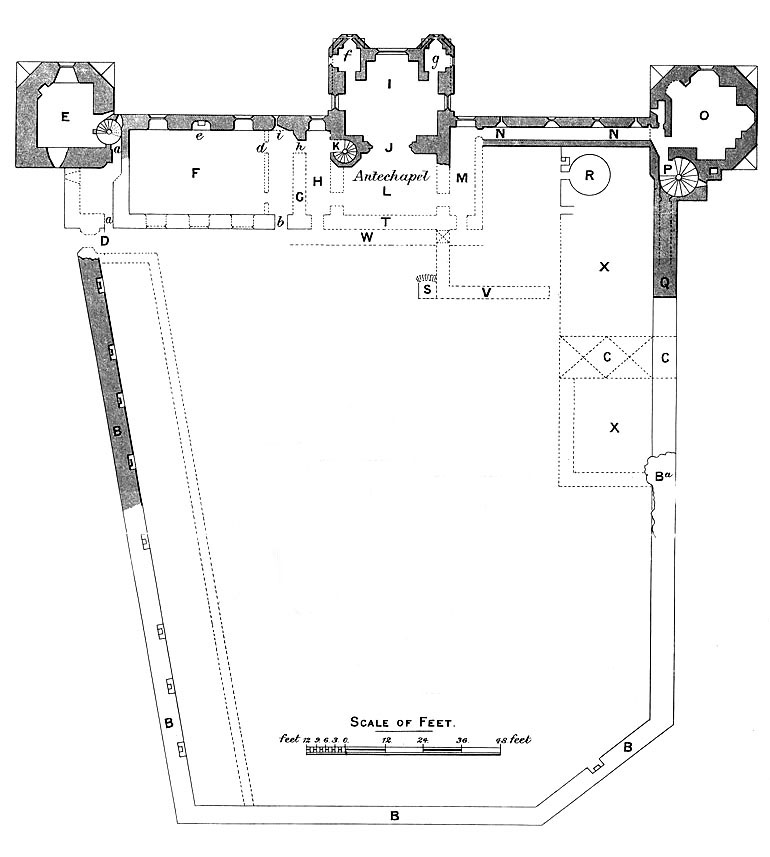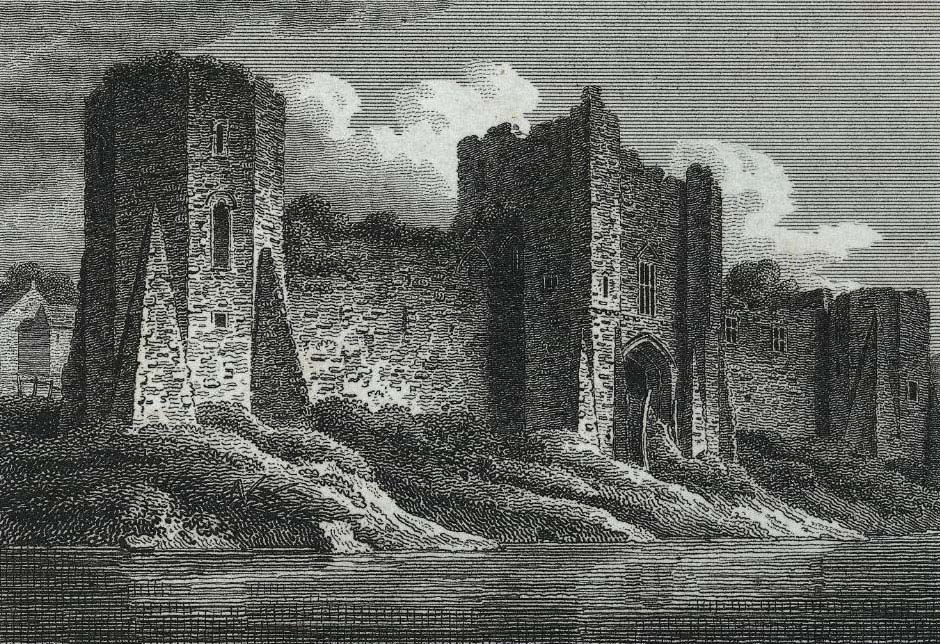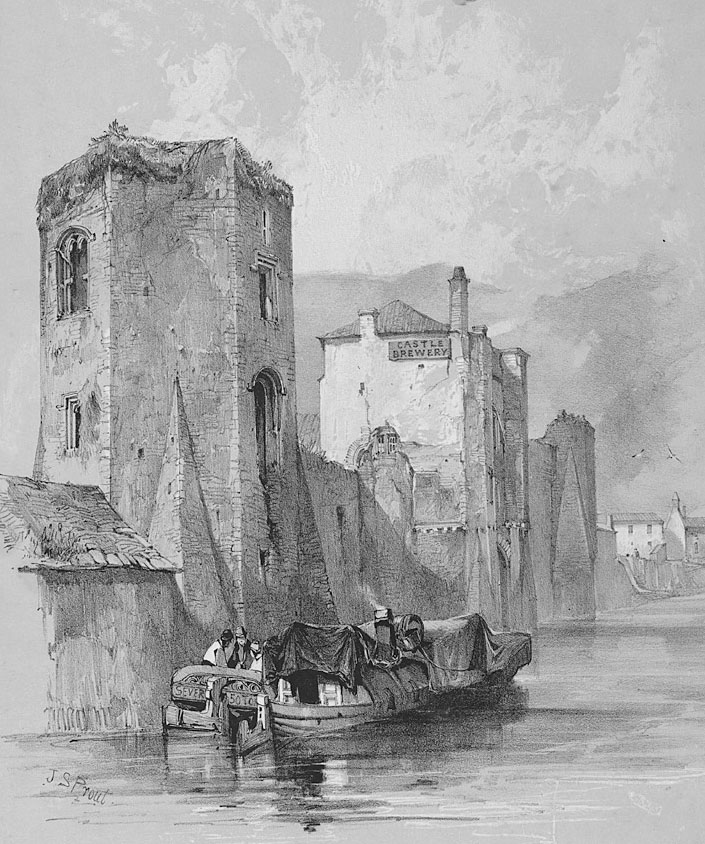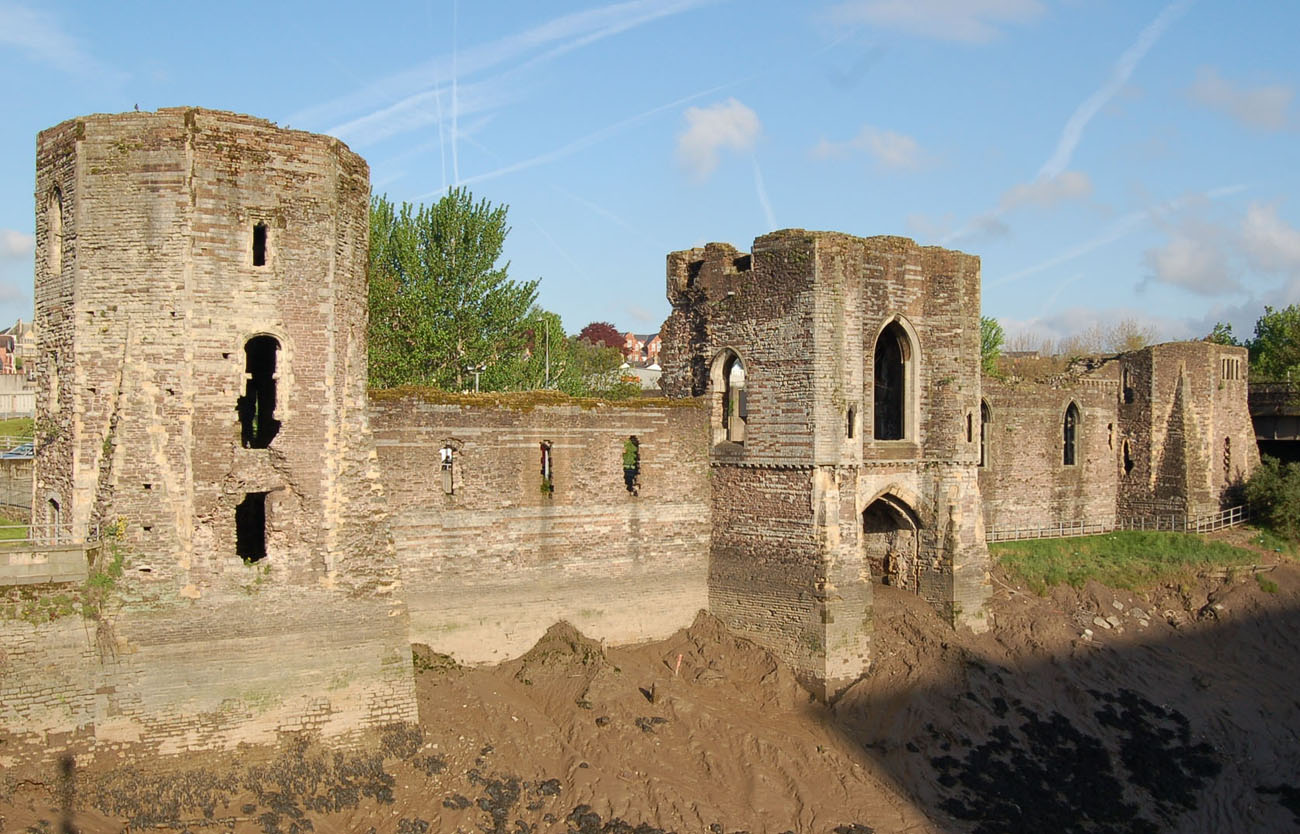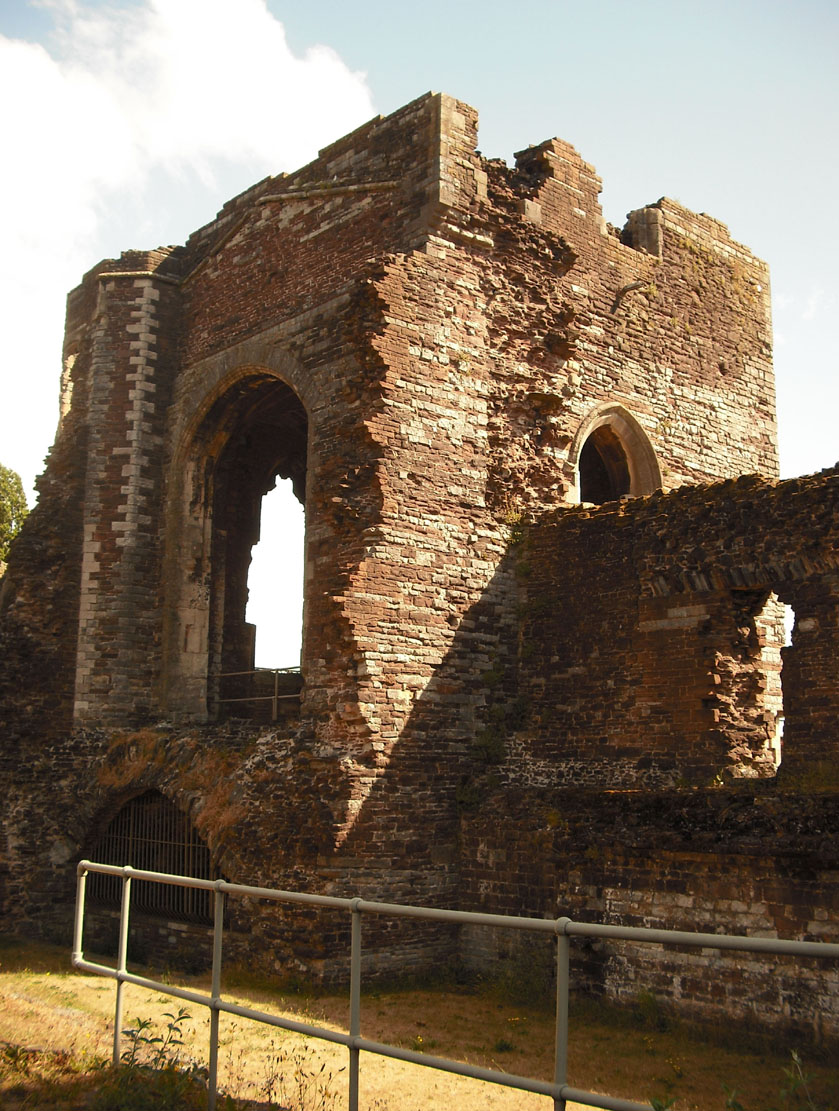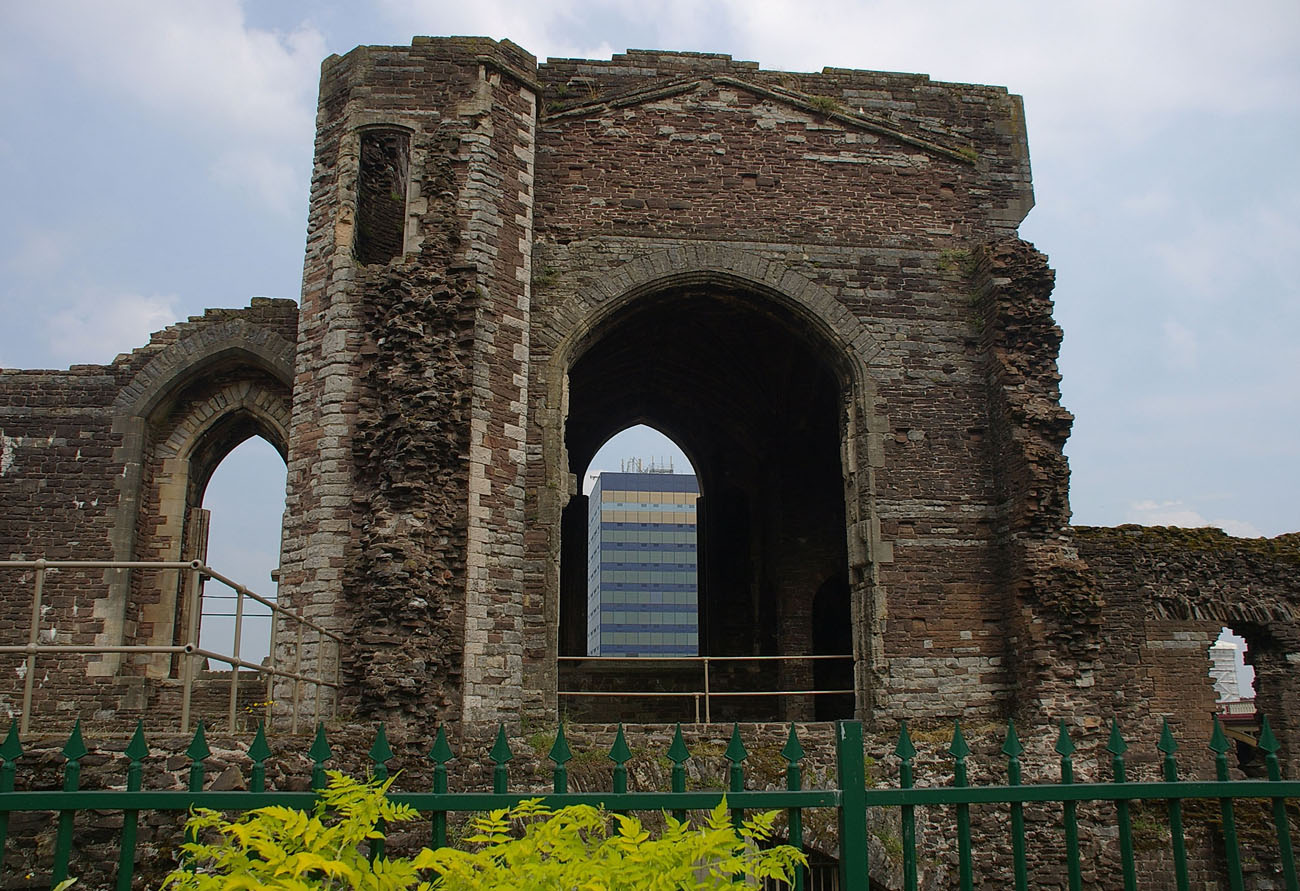History
The first timber – earth motte and bailey castle was erected in Newport at the end of the 11th century, probably on the initiative of Wilhelm II Rufus, who at the time led a campaigning against the Welsh or from Robert Fitzhamon’s foundation, Baron of Gloucester. This first stronghold was created on the Stow Hill, about a kilometer from the later stone structure.
Robert Fitzhamon had no male heir, so Newport Castle became the property of his eldest daughter, Mabel Fitzhamon. Around 1119, she married Robert de Caen, who was the illegitimate son of King Henry I. In 1172, Newport was attacked by Iorwerth ab Owain Gwynedd, father of Llywelyn ap Iorwerth, but was apparently rebuilt as royal documents from 1184 recorded expenses for the castle. Before 1199, the castle was owned by Prince John (later king), who received it through marriage to Isabella FitzRobert, Countess of Gloucester. In 1217, the castle passed into the hands of Gilbert de Clare, the fifth Earl of Gloucester, whose descendants held it until 1314, except for brief periods in 1233 when it was occupied by Simon de Montfort, in 1265 during the Second Barons’ War and in 1296 after the attack by Morgan Maredudd ap Llywelyn. Gilbert de Clare, the eighth Earl of Gloucester, was killed at the Battle of Bannockburn in 1314, making Newport the property of the King. Edward II presented it to the unpopular favorite, Hugh Despenser the Elder, which caused the attack of Roger Mortimer, Earl of March, during which the wooden castle on Stow Hill was completely destroyed.
The second, this time stone castle in Newport, probably began to be built before the mid-fourteenth century by Hugo de Audley, who came into the possession of local lands as a result of his marriage to Margaret de Clare (sister of Gilbert de Clare, eighth Earl of Gloucester). Situated on the banks of the Usk River, it controlled trade and traffic along this important artery, but was not yet complete by the end of the 14th century. This was probably due to the inheritance of Hugh’s underage sons, the fourth of whom, Edmund, did not come of age until 1397, and in 1403 he died at the Battle of Shrewsbury.
In 1400, the Welsh rebellion led by Owain Glyndŵr broke out. The uprising spread quickly and after 1402, and it also covered the areas of South Wales. The castle and the town of Newport were captured by insurgents along with fortifications in nearby Caerleon and Usk. Newport returned to royal hands in 1405, after the collapse of independence struggle. At that time, necessary repairs were made on behalf of Henry IV, and with the restoration of English control in South Wales, its role as an administrative center resumed.
In 1435 subsequent improvements were made by Humphrey Stafford, and after the overthrow of the Yorks after the Battle of Bosworth in 1485, the castle was briefly used as the residence of Jasper Tudor, uncle of Henry VII. It returned to the Crown in 1521, but was neglected and fell into disrepair. Nevertheless, the royalist garrison occupied the castle in 1648 during the English Civil War. A year later, the forces of the Parliament under the command of Oliver Cromwell made an attack and captured the stronghold. From that moment it was abandoned and completely ruined.
Architecture
The castle was erected on the river Usk, on its west bank, just above the crossing. It received a form on a pentagonal plan with a clearly dominant eastern side, facing the waterfront. This part was to impress and secure traffic on the river through three large towers. On its west side, a courtyard about 60 meters long on the east-west line was formed, surrounded by a stone wall. It was not reinforced with any tower, so the defense rested on long curtains and a moat filled with water from the river.
The central tower had a pointed gate portal, through which, at high tide, small boats had access to its interior. Above there was a stellar vaulted room heated by a fireplace, probably used during the audience of the castle lord and to host guests. From the west, it opened with a wide arcade to the part of the tower protruding towards the courtyard, where a kind of vestibule was probably located. In the eastern wall of the tower, the passage joined two small rooms in the corners of the tower protruding towards the river, from where perhaps the mechanisms of the portcullis closing the wide portal for boats in the ground floor was operated. A spiral staircase in the north-west corner of the tower led to the highest floor, where a chapel could be located.
The northern tower currently has two floors above the basement, originally it was certainly higher by at least one floor. Next to it, the northern gate and the western annex with latrines were placed. The southern tower had three floors, chambers with fireplaces and a latrine. Originally, it was accessible through a gallery in the wall thickness leading from the central tower. Like the northern tower, it was reinforced in the ground floor with prominent buttresses.
On the west side, a single defensive wall separated an internal courtyard with buildings located at the inner faces of the defensive walls. It housed, among others, utility rooms, a kitchen and a representative hall. The latter was on the north-eastern side, between the corner and central towers. From the river side it was illuminated by two two-light windows with side seats and was heated by a fireplace. From the south, it was adjacent to a smaller private chamber. There was another gate in the southern curtain of the wall, and the entire castle was surrounded by the above-mentioned irrigated moat.
Current state
Until now, the ruined, waterfront, east part of the castle has been preserved, consisting of three towers connected by a defensive wall, with windows visible on the once adjoining buildings. The castle is neglected today, not adapted to sightseeing and closed due to the safety of visitors.
bibliography:
Kenyon J., The medieval castles of Wales, Cardiff 2010.
Lindsay E., The castles of Wales, London 1998.
Salter M., The castles of Gwent, Glamorgan & Gower, Malvern 2002.

